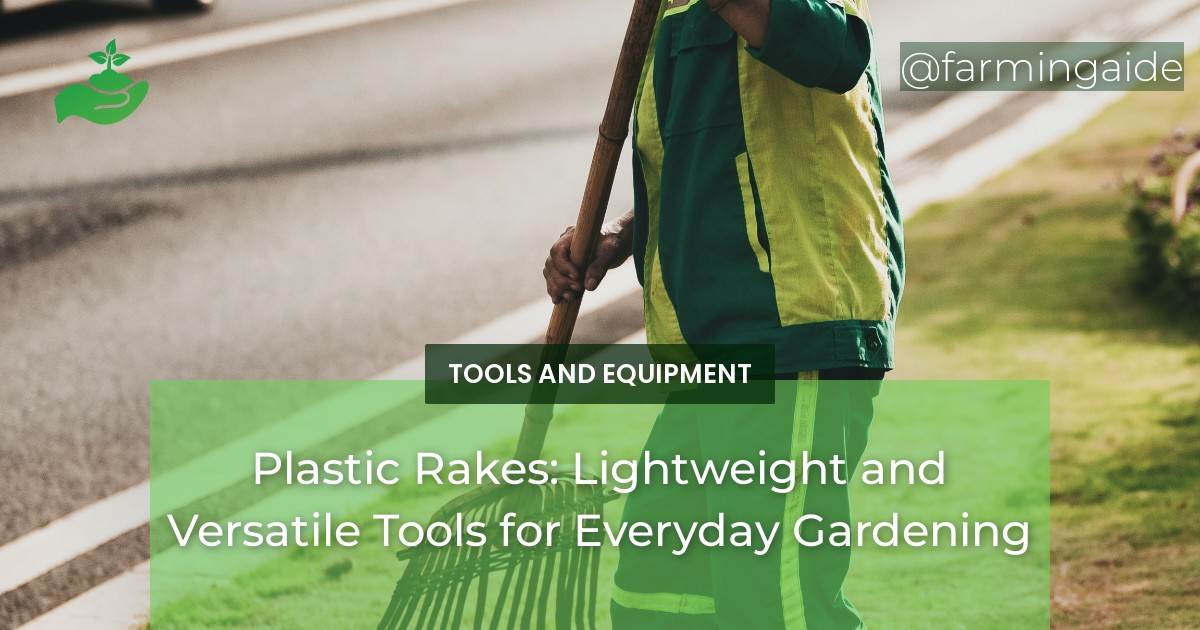When it comes to gardening tools, plastic rakes have become increasingly popular among both amateur and professional gardeners. These lightweight and versatile tools have revolutionized the way we care for our gardens, making the task of raking leaves and debris a breeze. In this article, we will explore the many benefits of using plastic rakes, their maintenance requirements, and how they compare to other types of rakes. Whether you are an experienced gardener or just starting out, understanding the advantages of plastic rakes can help you make an informed decision when selecting the right tool for your gardening needs.
Benefits of Plastic Rakes
Plastic rakes offer a range of benefits that make them an ideal choice for everyday gardening:
- Lightweight: One of the standout features of plastic rakes is their lightweight design. Unlike traditional metal rakes, plastic rakes are easy to maneuver, reducing the strain on your arms and back during prolonged use.
- Versatile: Plastic rakes are suitable for a variety of tasks in the garden, including raking leaves, grass, and other debris. They can also be used for spreading mulch or leveling soil, making them a versatile tool for any gardener.
- Gentle on Surfaces: Unlike metal rakes, plastic rakes are less likely to damage delicate surfaces such as grass or paving stones. Their plastic tines are gentle yet effective, allowing you to rake without leaving unsightly marks or scratches.
- Weather Resistant: Plastic rakes are designed to withstand the elements, making them a durable option for outdoor use. They are resistant to rust and corrosion, ensuring that they remain in good condition even after prolonged exposure to rain or sunlight.
With their lightweight construction and versatility, plastic rakes have quickly become a favorite tool among gardeners of all skill levels. However, like any gardening tool, regular maintenance is essential to keep them in optimal condition.
Maintenance of Plastic Rakes
To ensure the longevity of your plastic rake and maximize its performance, follow these maintenance tips:
- Clean after Use: After each use, remove any debris or dirt from the plastic rake using a hose or water source. This will prevent the buildup of grime and keep the tines free from obstruction.
- Inspect for Damage: Regularly inspect your plastic rake for any signs of wear or damage. If you notice any broken or bent tines, replace them promptly to ensure the rake continues to work effectively.
- Store Properly: When not in use, store your plastic rake in a dry and sheltered area. This will help prevent unnecessary exposure to moisture and sunlight, which can degrade the plastic over time.
By following these simple maintenance steps, you can extend the lifespan of your plastic rake and ensure it remains a reliable tool for your gardening needs.
ALSO READ
How Can Plastic Rakes Help with Maintaining Raised Bed Gardens?
Plastic rakes are essential for maintaining a raised bed garden layout. They help in aerating the soil, removing debris, and spreading mulch. The lightweight and durable nature of plastic rakes make them ideal for small-scale gardening, allowing for easy maneuverability within the confined spaces of a raised bed garden layout.
Plastic Rakes vs. Other Types of Rakes
While plastic rakes have their advantages, it’s essential to understand how they compare to other types of rakes commonly used in gardening. Here are some key differences:
- Metal Rakes: Plastic rakes are lighter and more comfortable to use than metal rakes. They are also less likely to cause damage to delicate surfaces. However, metal rakes are often more durable and better suited for heavy-duty tasks.
- Bamboo Rakes: Bamboo rakes are environmentally friendly and offer a natural aesthetic. However, they are generally not as durable as plastic or metal rakes and may not withstand heavy use.
- Adjustable Rakes: Some rakes feature adjustable tines, allowing you to customize the width and angle of the rake. While plastic rakes may not offer this feature, their lightweight design makes them easier to handle.
Ultimately, the choice between plastic rakes and other types of rakes depends on your specific gardening needs and personal preferences. Consider factors such as the tasks you will be performing, the surfaces you will be working on, and your comfort level when using different types of rakes.
In conclusion, plastic rakes are lightweight and versatile tools that offer numerous benefits for everyday gardening tasks. Their lightweight design, versatility, and gentle nature make them an excellent choice for raking leaves, grass, and debris. By properly maintaining your plastic rake, you can ensure its durability and performance. When comparing plastic rakes to other types of rakes, consider factors such as durability, surface compatibility, and adjustability. Armed with this knowledge, you can confidently choose the right rake for your gardening needs and enjoy a more enjoyable and efficient gardening experience.


